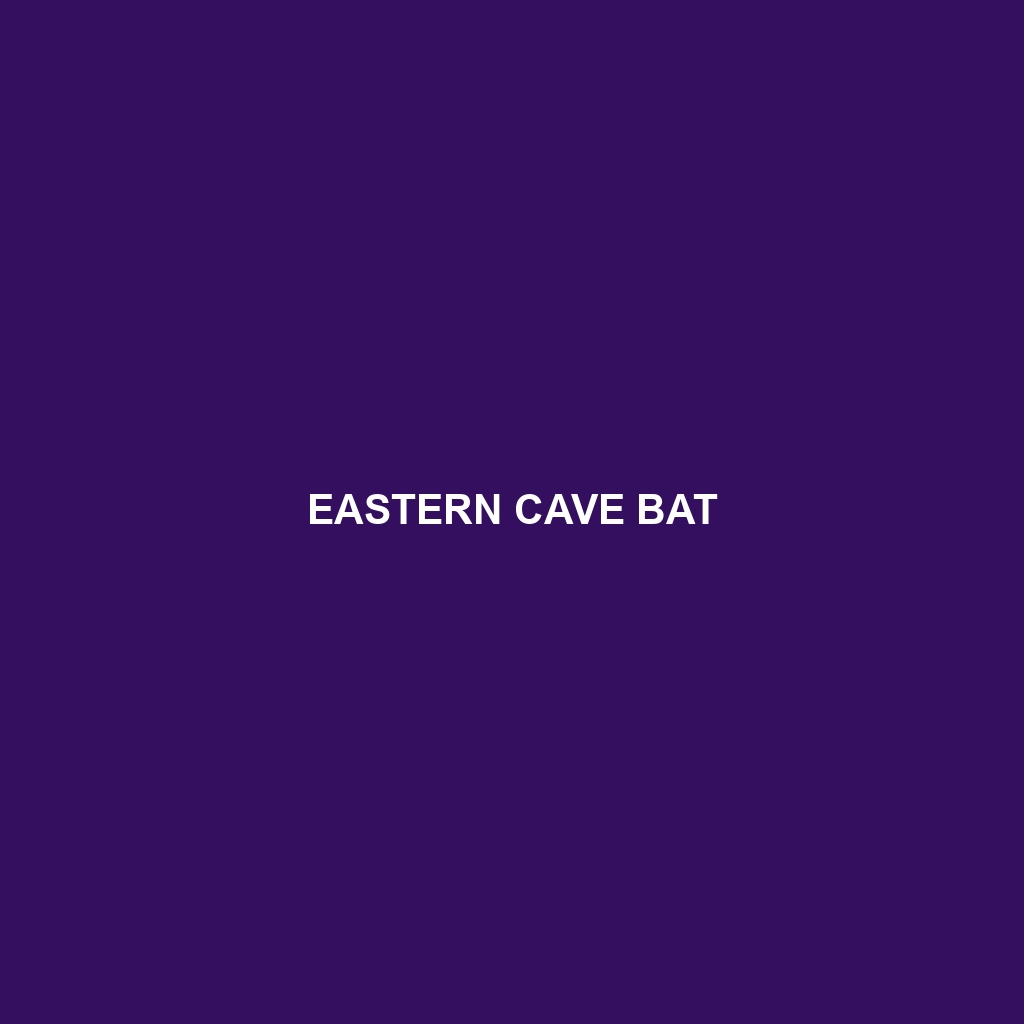Eastern Cave Bat Species Description
Common Name: Eastern Cave Bat
Scientific Name: Myotis austroriparius
Habitat
The Eastern Cave Bat is primarily found in the eastern United States, particularly in areas characterized by limestone caves and forests. Its preferred habitat includes wetland regions and moist forests, as well as suburban areas where mature trees and caves are present. This species often roosts in natural caves or man-made structures, which offer the necessary shelter from predators and harsh weather conditions.
Physical Characteristics
The Eastern Cave Bat is a medium-sized bat, measuring approximately 8.5 to 10 cm in body length and weighing between 6 to 12 grams. Their fur is typically a light brown to grayish color, with a darker hue on the back. This species has large ears that are approximately the same length as its head and a distinctive, rounded nose. Its wingspan can reach up to 25 cm, making it a proficient flyer.
Behavior
Eastern Cave Bats exhibit nocturnal behavior, emerging at dusk to forage for food. They are social creatures, often found roosting in colonies. Their echolocation abilities allow them to navigate and hunt for insects when flying. During the day, they tend to gather in large numbers in their roosting locations, utilizing thermoregulation techniques to conserve heat.
Diet
The diet of the Eastern Cave Bat primarily consists of flying insects, including moths, beetles, and flies. They are adept hunters, using their echolocation to detect prey in flight. This insectivorous diet plays a vital role in controlling insect populations, making them environmentally important.
Reproduction
Breeding typically occurs in late summer, with females giving birth to a single pup around late spring or early summer. After a gestation period of approximately 50 to 60 days, the pups are born and initially rely on their mother for nourishment. Maternal care is intensive, as mothers nurse their young until they are capable of foraging independently, which takes about four weeks.
Conservation Status
Currently, the Eastern Cave Bat is listed as vulnerable due to habitat loss and white-nose syndrome, a fungal disease that has severely impacted bat populations across North America. Conservation efforts are focused on habitat protection and monitoring of local populations to ensure their survival.
Interesting Facts
One unique aspect of the Eastern Cave Bat is its ability to migrate between roosting sites during different seasons. Additionally, these bats can live up to 10 years in the wild, making them resilient and long-lived within their ecosystems.
Role in Ecosystem
The Eastern Cave Bat plays an essential role in maintaining the ecological balance by controlling insect populations. Their feeding habits contribute to reduced pest pressures, enhancing the overall health of the environment. Furthermore, as prey for larger animals, they are a crucial part of the food web, supporting biodiversity.
This HTML formatted species description provides a comprehensive overview of the Eastern Cave Bat, using relevant keywords and structuring the information for optimal engagement and visibility in search engines.
